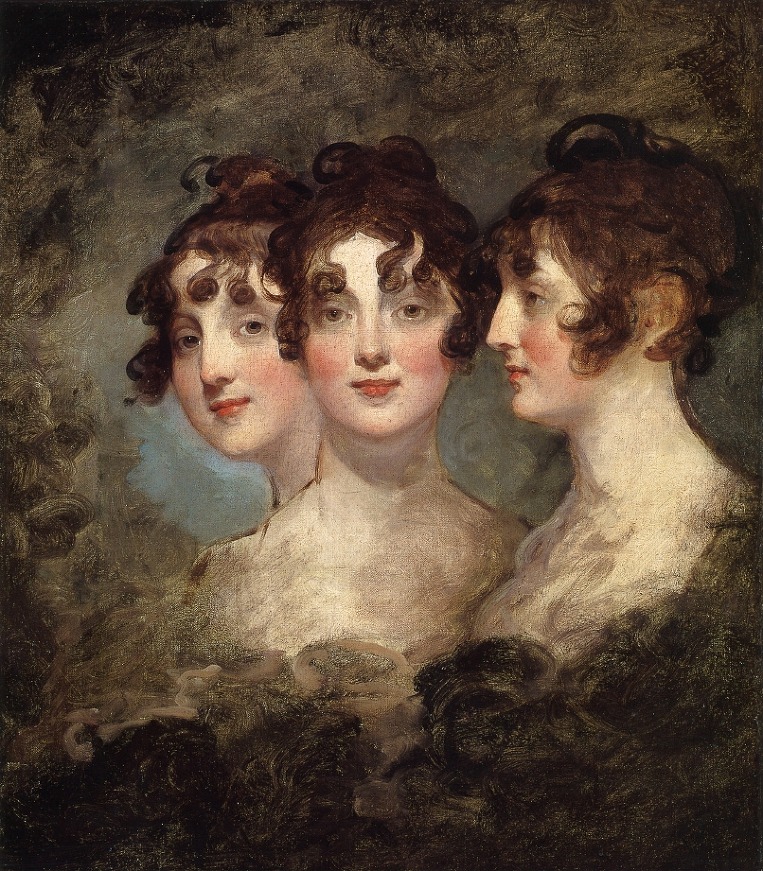|
List Of People From Saint Petersburg
This is a list of famous people who have lived in Saint Petersburg, Russia (1914–1924: ''Petrograd'', 1924–1991: ''Leningrad''). Born in Saint Petersburg 1701–1800 * Peter II of Russia (1715–1730) Emperor of Russia from 1727 to 1730. * Franz Moritz von Lacy (1725–1801), son of Count Peter von Lacy and a famous Austrian field marshal. * Dmitri Alekseyevich Gallitzin (1728–1803), diplomat, art agent, author, volcanologist and mineralogist * Johann Euler (1734–1800), Swiss-Russian astronomer and mathematician * John Julius Angerstein (1735–1823) a London businessman and Lloyd's underwriter. * Ivan VI of Russia (1740–1764), Emperor of Russia, 1740–1741. * Ivan Lepyokhin (1740–1802), naturalist, zoologist, botanist and explorer * Mikhail Kutuzov (1745–1813), Field Marshal of the Russian Empire. * Nikolay Rumyantsev (1754–1826), Russia's Foreign Minister and Imperial Chancellor * Mikhail Miloradovich (1771–1825), Russian general of Serbian origin ... [...More Info...] [...Related Items...] OR: [Wikipedia] [Google] [Baidu] |
Jérôme Bonaparte
Jérôme-Napoléon Bonaparte (born Girolamo Buonaparte; 15 November 1784 – 24 June 1860) was the youngest brother of Napoleon I and reigned as Jerome Napoleon I (formally Hieronymus Napoleon in German), King of Westphalia, between 1807 and 1813. Historian Owen Connelly points to his financial, military, and administrative successes and concludes he was a loyal, useful, and soldierly asset to Napoleon. Others, including historian Helen Jean Burn, have demonstrated his military failures, including a dismal career in the French navy that nearly escalated into war with Britain over an incident in the West Indies and his selfish concerns that led to the deaths of tens of thousands during the Russian invasion when he failed to provide military support as Napoleon had counted upon for his campaign; further, his addiction to spending led to both personal and national financial disasters, with his large personal debts repeatedly paid by family members including Napoleon, his mother, an ... [...More Info...] [...Related Items...] OR: [Wikipedia] [Google] [Baidu] |
Nicholas I Of Russia
Nicholas I , group=pron ( – ) was List of Russian rulers, Emperor of Russia, Congress Poland, King of Congress Poland and Grand Duke of Finland. He was the third son of Paul I of Russia, Paul I and younger brother of his predecessor, Alexander I of Russia, Alexander I. Nicholas inherited his brother's throne despite the failed Decembrist revolt against him. He is mainly remembered in history as a reactionary whose controversial reign was marked by geographical expansion, economic growth, and massive industrialisation on the one hand, and centralisation of administrative policies and repression of dissent on the other. Nicholas had a happy marriage that produced a large family; all of their seven children survived childhood. Nicholas's biographer Nicholas V. Riasanovsky said that he displayed determination, singleness of purpose, and an iron will, along with a powerful sense of duty and a dedication to very hard work. He saw himself as a soldier—a junior officer totally consumed ... [...More Info...] [...Related Items...] OR: [Wikipedia] [Google] [Baidu] |
Konstantin Thon
Konstantin Andreyevich Thon, also spelled Ton (russian: Константи́н Андре́евич Тон; October 26, 1794 – January 25, 1881) was an official architect of Imperial Russia during the reign of Nicholas I. His major works include the Cathedral of Christ the Saviour, the Grand Kremlin Palace and the Kremlin Armoury in Moscow. Early life Konstantin, born in St. Petersburg to the family of a German jeweller, was one of three Thon brothers who all rose to become notable architects. He studied at the Imperial Academy of Arts (1803–15) under the Empire Style architect Andrey Voronikhin, best remembered for his work on the Kazan Cathedral, situated right in the middle of the Nevsky Prospekt. He studied Italian art in Rome from 1819 to 1828, and on his return home was admitted to the academy as its member (1830) and professor (1833). In 1854, he was appointed rector of the architectural division of the academy. Thon first attracted public attention with his sumpt ... [...More Info...] [...Related Items...] OR: [Wikipedia] [Google] [Baidu] |
Nikolay Muravyov-Karsky
Nikolay Muravyov (russian: Николай Николаевич Муравьёв-Карский; 14 July 1794 – 23 October 1866) was an Imperial Russian military officer and General of the Russian Army. A member of the mighty Muravyov family, he distinguished himself during the battle of Warsaw (1831) of the November Uprising The November Uprising (1830–31), also known as the Polish–Russian War 1830–31 or the Cadet Revolution, was an armed rebellion in the heartland of partitioned Poland against the Russian Empire. The uprising began on 29 November 1830 in W .... He continued to serve in the military and took active part in the fights of the Crimean War. For his role in the Siege of Kars, captured on November 28, 1855 (according to Gregorian calendar), the tsar awarded him with a prestigious title "Karski" ("of Kars"), added to his surname. {{russia-mil-bio-stub 1794 births 1866 deaths Imperial Russian Army generals Russian nobility Russian people of the No ... [...More Info...] [...Related Items...] OR: [Wikipedia] [Google] [Baidu] |
Maria Danilova
Maria Danilova (1793 – 1810) was a Russian ballet dancer. Biography Danilova enrolled in the St. Petersburg school at the age of eight. The trainer Charles-Louis Didelot took notice of her talent, and she made her first public appearance a year later. By the age of 15 she was dancing with Louis-Antoine Duport. Her dancing was described as "so light and elusive that it took the audience's breath away". Danilova had a fragile constitution and the stress of performance as well as a brief, unhappy affair with Duport took a toll on her health. She died of tuberculosis at the age of 17. The Danilova crater on Venus is named in her honor. References Ballerinas from the Russian Empire 1793 births 1810 deaths 19th-century ballet dancers from the Russian Empire {{Russia-bio-stub ... [...More Info...] [...Related Items...] OR: [Wikipedia] [Google] [Baidu] |
Grand Duke
Grand duke (feminine: grand duchess) is a European hereditary title, used either by certain monarchs or by members of certain monarchs' families. In status, a grand duke traditionally ranks in order of precedence below an emperor, as an approximate equal of king or archduke and above a sovereign prince or sovereign duke. The title is used in some current and former independent monarchies in Europe, particularly: * in the present-day Grand Duchy of Luxembourg * historically by the sovereigns of former independent countries, such as Tuscany (from 1569 to 1860, now part of Italy) * in Baden, Hesse, Oldenburg, Mecklenburg-Schwerin, Mecklenburg-Strelitz and Saxe-Weimar – grand duchies from 1815 to 1918, and all now part of present-day Germany * formerly also in some countries in Eastern and Northeastern Europe, such as the Grand Duchy of Finland or the Grand Duchy of Lithuania Western and Central European The term ''grand duke'' as a monarch reigning over an independent state w ... [...More Info...] [...Related Items...] OR: [Wikipedia] [Google] [Baidu] |
Grand Duchess Olga Pavlovna Of Russia
Grand Duchess Olga Pavlovna of Russia (russian: Ольга Павловна; ) was a ''Grand Duchess of Russia'' as the second youngest daughter and seventh child of the Tsarevich of Russia (later Emperor Paul I) and his consort, Sophie Dorothea of Württemberg. Birth and Christening The Grand Duchess Olga was born as her parents' fifth daughter and seventh child. Her birth was not greeted with much happiness by her paternal grandmother, Catherine the Great, who stated that "A lot of girls, all married will not tell anyone". She later wrote: The little Grand Duchess was baptised on and, as it was customary, she received the Great Cross of the Order of Saint Catherine. Death The almost-three-year-old Grand Duchess died on . A letter to Catherine the Great stated: The same year, Gavrila Derzhavin dedicated a poem to her death, entitled "On the death of Grand Duchess Olga Pavlovna", just as he had dedicated a poem to her when she was born. Out of the ten children born to Pau ... [...More Info...] [...Related Items...] OR: [Wikipedia] [Google] [Baidu] |
Sylvester Shchedrin
Sylvester Feodosiyevich Shchedrin (russian: Сильвестр Феодосиевич Щедрин; 13 February 17918 November 1830) was a Russian landscape painter. Biography Sylvester Shchedrin was born in St. Petersburg into the family of the famous sculptor Feodosiy Shchedrin, rector of the Imperial Academy of Arts. The landscape painter Semion Shchedrin was his uncle. In 1800, Sylvester Shchedrin entered the Imperial Academy of Arts in St. Petersburg, where he studied landscape paintings. Among his teachers were his uncle, Semion Shchedrin, Fyodor Alekseyev, M.M. Ivanov and Thomas de Thomon.V. N. Alekseyev ''History of Russian Art, Minsk, Harvest, 2004 In 1811 he graduated with several awards including the Large Gold Medal for his painting ''View from Petrovsky Island'' that gave him a scholarship to study abroad. Sylvester left for Italy in 1818, delayed due to the Napoleonic Wars. In Italy, he studied the old masters in Rome; went to Naples to paint watercolors or ... [...More Info...] [...Related Items...] OR: [Wikipedia] [Google] [Baidu] |
Paul I Of Russia
Paul I (russian: Па́вел I Петро́вич ; – ) was Emperor of Russia from 1796 until his assassination. Officially, he was the only son of Peter III of Russia, Peter III and Catherine the Great, although Catherine hinted that he was fathered by her lover Sergei Saltykov.Aleksandr Kamenskii, ''The Russian Empire in the Eighteenth Century: Searching for a Place in the World'' (1997) pp 265–280. Paul remained overshadowed by his mother for most of his life. He adopted the Pauline Laws, laws of succession to the Russian throne—rules that lasted until the end of the Romanov dynasty and of the Russian Empire. He also intervened in the French Revolutionary Wars and, toward the end of his reign, added Kingdom of Kartli-Kakheti, Kartli and Kakheti in Eastern Georgia into the empire, which was confirmed by his son and successor Alexander I of Russia, Alexander I. He was ''de facto'' Grand Master (order), Grand Master of the Knights Hospitaller, Order of Hospitallers from ... [...More Info...] [...Related Items...] OR: [Wikipedia] [Google] [Baidu] |
Catherine Pavlovna Of Russia
Grand Duchess Catherine Pavlovna of Russia (russian: Екатерина Павловна; 21 May 1788 [OS 10 May 1788] – 9 January 1819) later Queen Catharina Pavlovna of Württemberg, was the fourth daughter of Paul I of Russia, Tsar Paul I of Russia and Maria Feodorovna (Sophie Dorothea of Württemberg), Duchess Sophie Dorothea of Württemberg. She became the Queen of Württemberg upon her marriage to her first cousin Crown Prince William who eventually became William I of Württemberg, King William I of Württemberg in 1816. Early life Ekaterina was born in Pushkin, Saint Petersburg, Tsarskoye Selo and named after her grandmother, Catherine the Great. Described as beautiful and vivacious, she had a happy childhood and her education was carefully supervised by her mother. Ekaterina received the best education and constantly furthered her education through reading new literary publications and personal contacts with various outstanding persons. Known as Katya in the fami ... [...More Info...] [...Related Items...] OR: [Wikipedia] [Google] [Baidu] |
French Invasion Of Russia
The French invasion of Russia, also known as the Russian campaign, the Second Polish War, the Army of Twenty nations, and the Patriotic War of 1812 was launched by Napoleon Bonaparte to force the Russian Empire back into the continental blockade of the United Kingdom. Napoleon's invasion of Russia is one of the best studied military campaigns in history and is listed among the most lethal military operations in world history. It is characterized by the massive toll on human life: in less than six months nearly a million soldiers and civilians died. On 24 June 1812 and the following days, the first wave of the multinational crossed the Niemen into Russia. Through a series of long forced marches, Napoleon pushed his army of almost half a million people rapidly through Western Russia, now Belarus, in an attempt to destroy the separated Russian armies of Barclay de Tolly and Pyotr Bagration who amounted to around 180,000–220,000 at this time. Within six weeks, Napoleon lost ha ... [...More Info...] [...Related Items...] OR: [Wikipedia] [Google] [Baidu] |





.jpg)
